| 1 | Spain and Portugal’s main viper |
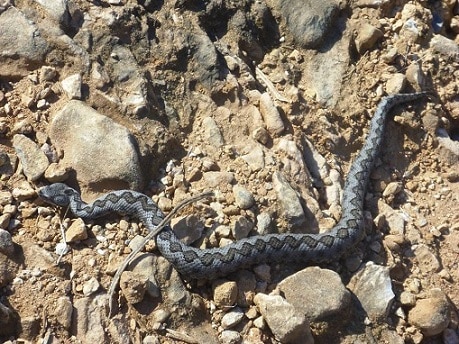
Spain is home to three viper species, among 5 venomous snakes overall. The Baskian viper occupies the far northwest, while the asp viper is mostly a French snake, but spills into the far northeast of Spain. The Spanish viper with by far the biggest range is Lataste’s viper, named after French herpetologist Fernand Lataste.
Vipera latastei occupies the lower 80% of Spain, along with the entirety of Portugal. It also has small colonies along the Moroccan, Tunisian and Algerian coasts, plus a mountainous outpost in the Moroccan Rif range.
Lataste’s vipers are much shier than the nearby Montpellier snake or ladder snake. They’re totally averse to human habitats, to the extent that when traditional farmland is converted to uniform wheat fields, they completely disappear. Finding a Lataste’s viper in a town or city is extremely rare. Their favourite spots are dry, rugged habitats such as oak or holm oak forests, and dry rocky outcrops on the edges of those forests. Their favourite habitat of all is steep, dry, rocky slopes with plenty of bushes and shrubs, which they love to take shelter under.
Lataste’s vipers are easiest to find in national parks and mountain ranges, as these are mostly untouched by mankind. This species can be found at altitudes of 2780 metres in the Baetic mountains, and 1500 metres in Portugal.
| 2 | Ashy grey with black zigzags |
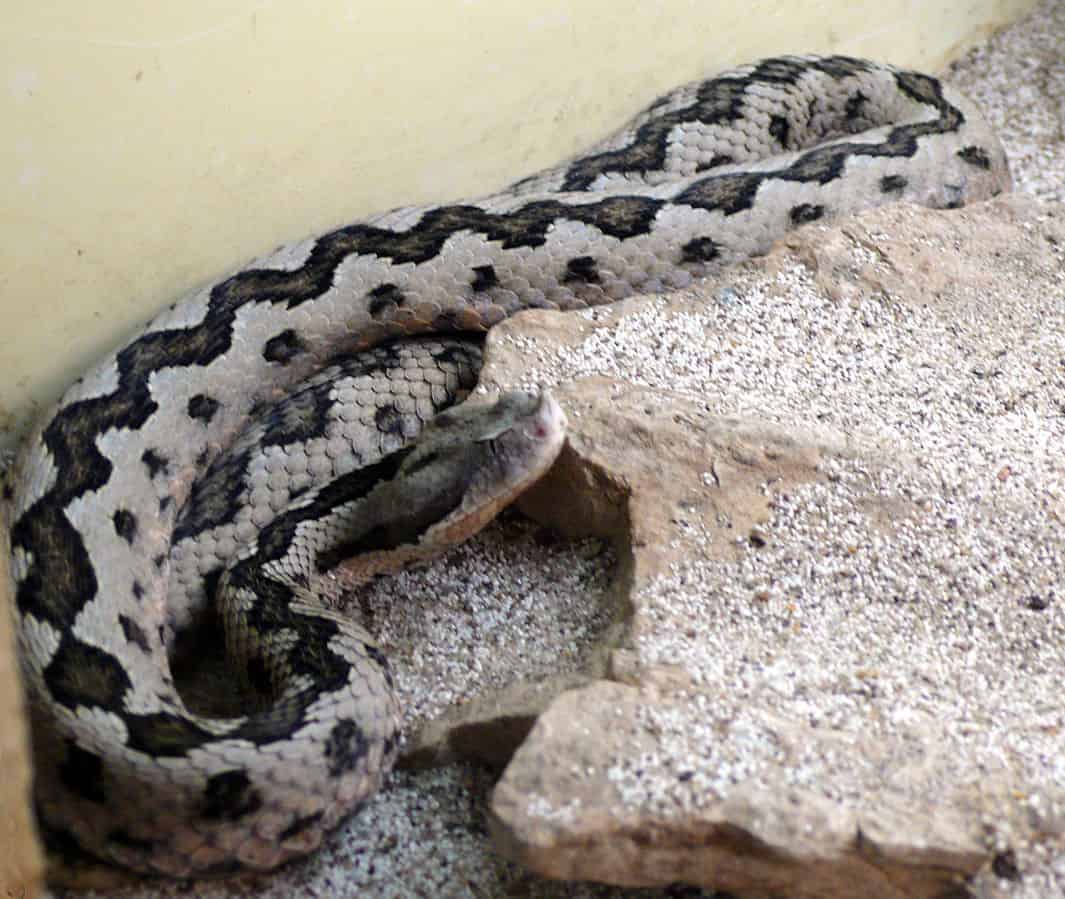
Lataste’s vipers don’t just live among rocks, but have ninja-level skill at blending into them. Their background colour varies from light brown to an ashen grey, and the main patterns are pitch black zigzags, in adults and younglings. The grey ones in particular can be almost unnoticeable on a rock field unless you’re hunting for them.
Lataste’s vipers are much smaller than the asp viper of France, or the adder of Britain (which is really a viper). Their average is 30-60cm and the record was a measly 73cm. They compensate for this with a thicker body, and the bulky triangular head common to all European vipers. This head is a classic ID sign as well, a simple way to distinguish it from nearby Spanish serpents like the ladder and Montpellier snake.
Another simple trick is their pupils, which are razor thin and vertical rather than beady and round. The final ID sign is their upturned nose, which almost looks like a horn. This has led to two alternative names: the snub-nosed viper, or the snub-nosed adder.
| 3 | Dangerous, but rarely lethal |
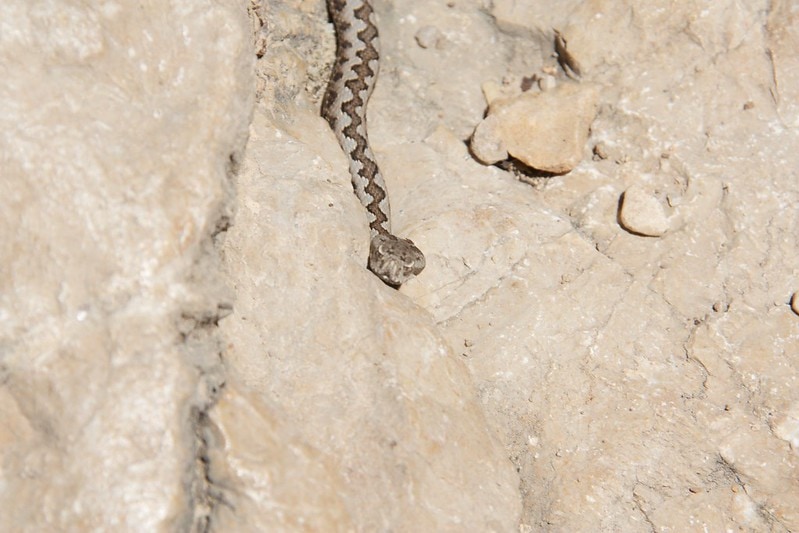
Vipera latastei looks like a bit of a joke at first glance. The LD50 rating of its venom is unimaginably weak at 7-20mg, compared to 0.4mg in a Russell’s viper. They inject only 15-30mg of venom per bite, which is decent considering their small body size, but still a minor splash vs the forest cobra’s tidalwave (571mg).
They even have fragile fangs, which often break off while handlers grip them to extract venom. Sometimes, a Lataste’s viper’s fangs will break off and remain lodged in a prey animal. Then they’ll come out the other end a few days later after the prey is swallowed.
Lataste’s viper has never been recorded to kill a person. But despite these frailties, they’re not to be underestimated: a Lataste’s viper can still inflict 5 days of blackening skin, throbbing pain, and wave after wave of nausea. Its venom is mostly cytotoxic and necrotic, and can cause blackening to spread all down the arm, as shown by this son’s pictures of his father who was bitten in Estremadura, Spain. Blisters and swelling around the bite area are very common. Other symptoms include vomiting and diarrhea. The fang marks are 6-10mm apart, and the symptoms usually peak at 20-24 hours post bite.
| 4 | Feared by Spanish villagers |
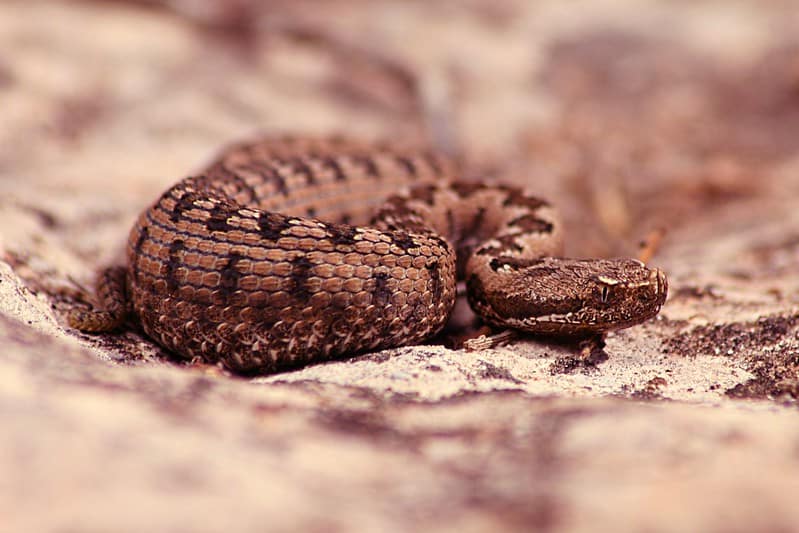
The heart of Spain has been inhabited since deep into prehistory, and over thousands of years, many beliefs and superstitions about vipers have taken hold which still cling on today. Villagers have many crazy beliefs about Lataste’s vipers, such as them flying into a rage and chasing people, determined to bite. This leaves you with no choice but to slay the snake.
They also believe that when wandering the countryside, you can hear the song of the viper, despite Lataste’s viper making a low snort at best. Another myth revolves around their tails. Lataste’s vipers have short tails, yet very colourful ones, either pitch black or bright yellow. Unusually for a snake, this lingers into adulthood. Some Spanish villagers believe that there are two forms of Lataste’s viper: a lighter one, and a dark form which is much more toxic.
A classic saying all over Spain is “Si la víbora viera y el escorpión oyera, no habría hombre que al campo saliera”. This translate roughly as “If the viper saw and the scorpion heard, no man would go out into the field”. Another version finishes with “there would be no-one left in the world”. There are many variations of this viper-fearing proverb.
| 5 | Gradually declining |
The situation isn’t too dire, but Lataste’s vipers are listed as “near threatened” by ICUN. A number of factors are joining forces to pile on the pressure, the first being their fussy nature. After the smooth snake (which loves heathland), Lataste’s viper has the least number of habitats of any Spanish snake.
As their holm oak and rocky bush outcrops retreat against the forces of industrialisation, they have nowhere to go. Urbanisation is the basic problem, the march and steady creep of new housing estates, one block at a time so that over decades, the progress is imperceptible yet gigantic. But conversion of old agricultural land is equally damaging. Old Spanish farms used to exist in a traditional mosaic style, with diverse meadows separated by old stone walls and lightly manned crop fields. Starting in the 1930s, these were replaced with vast wheat monocultures, both in Portugal and Spain, causing Lataste’s viper to vanish.
Forests have seen a similar trend: holm oak has been cut down and replaced with fast growing manmade forests like pines and eucalyptus (those newspapers can’t be printed on air). These acidify the soil and damage the entire food chain, leading to the Lataste’s vipers demise. They’re also poor at surviving forest fires, and these fires have particularly damaged them in Catalonia. Rather than a continuous empire across Spain and Portugal, the Lataste’s viper has a very fragmented range, where its old habitats cling on.
| 6 | Hotspot: Lighthouse Island |
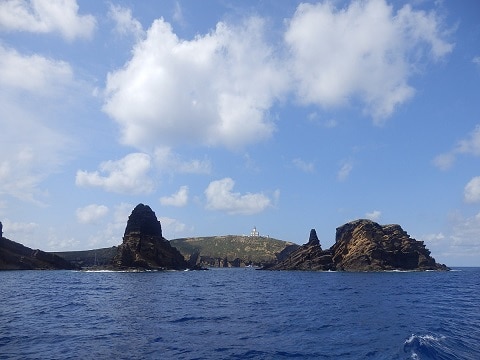
You won’t find any Lataste’s vipers on Ibiza, or the neighbouring Formentera and Mallorca. But until the 19th century they did have an island stronghold where they unquestionably reigned supreme – the Columbretes islands. These are 4 tiny, uninhabited islets off the northwest coast, which have no permanent buildings except for an old lighthouse.
The Columbretes Islands were once estimated to hold 2700 Lataste’s vipers. Even Roman doctor Pliny the Elder visited 2000 years ago and commented on the gigantic amount of snakes. A fisherman crashing on these rocks would have ended up with a nasty surprise. Unfortunately, this stronghold died out starting in 1856. Over the next three years, labourers worked tirelessly to construct the lighthouse, but in the process, they clubbed to death any snakes they saw.
Farmers arrived around the same time, bringing in hungry pigs and burning vegetation to create arable land. Up to 70 vipers were killed per day, and by 1859, every last snake on the islands was gone. The Lataste’s viper’s global capital was no more, and today the islands remain as bare as ever.
| 7 | Males versus females |
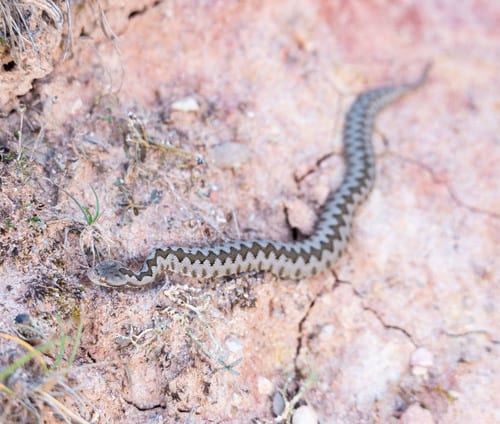
With Lataste’s vipers, neither males nor females are bigger than each other. The big difference is their colour. Females are duller, more likely to have a brown base of scales with dark zigzags that fade as they age. The zigzags are far bolder in males, and contrast against a grey background to look like ashy rock.
The two subspecies also have a different appearance. The main one is vipera latastei latastei, which is confined to most of Spain and the northern parts of Portugal. The second subspecies is vipera latestei gaditana, native to North Africa, the lower 66% of Portugal, and southwest Spain. This version has a greyer head, and less noticeable spots on its back. Its body size is noticeably smaller, but the nose horn is bigger and more complex.
At the side of the zigzags, Lataste’s vipers also have rich dark spots on their bodies. Scientists have confirmed that the exact number of spots is passed down from parent to child, with a genetic link of 80%.
| 8 | Diet: whatever’s available |
Unlike their habitat, vipera latastei has few preferences in its diet. They lean towards mammals, but generally take whatever prey’s there. For example, a study in northern Portugal found that the wood mouse (Apodemus sylvaticus) was the most common small mammal nearby, and also made up 39.8% of the local Lataste’s viper’s meals. This common mouse measures just 9cm, and inhabits the entirety of western Europe. Mammals made up 75.9% of its diet overall, with reptiles at 14.4%.
Two studies examined the Iberian peninsula (Spain and Portugal) as a whole, and found extremely similar percentages for mammals in their diet: 57.5% and 57.21%. The first of those found the wood mouse as the most common mammal again, at 12.61%. But despite reptiles only making up 32.88% of prey, the single most common prey species was the Iberian wall lizard (23.87%). This reptile is long and faint green with jet black spots. It likes walls and rocks and can move extremely quickly, in the classic stop start motion of many small lizards.
It seems this Spanish lizard has a tough time: it’s also hunted by Montpellier snakes and ladder snakes. In Andalucía, the Iberian wall lizard makes up 60% of the Lataste’s viper’s calories. Reptiles were 73.33% overall, showing how flexible they are. Back in northern Portugal, the Iberian wall lizard only made up 6% of its diet.
| 9 | Deceives with a yellow tail |
Lataste’s viper is a stalking predator, waiting under a shrub before spotting a mouse saunter past, and slithering silently behind for a while. Like its neighbour the ladder snake, they always swallow their prey by the head. But unlike the ladder snake, they always release their prey immediately after biting, and wait for the venom to take effect before regripping.
The Lataste’s viper’s sneakiest skill is undoubtedly caudal luring. This is used by other snakes around the world – it’s when they wiggle a brightly coloured tail in a hypnotising pattern, to trick prey species into thinking its their own prey such as an insect. The Lataste’s viper’s black or yellow tail is perfect for this, but they’re rare in that they keep the skill in adulthood, whereas 80% of other caudal luring snakes only possess the power as juveniles (including the pygmy rattlesnake).
Lataste’s vipers use caudal luring in a similar style to the cottonmouth in the southern US. Their next level secret is to position the tail directly behind their head, so that when the curious prey comes closer, thinking they’re spotted a grasshopper, they’re in close proximity to their mouth. They use these luring tactics while coiled in a shrub, probably to keep the rest of their body hidden and keep the charade going.
| 10 | Nocturnal or diurnal? |
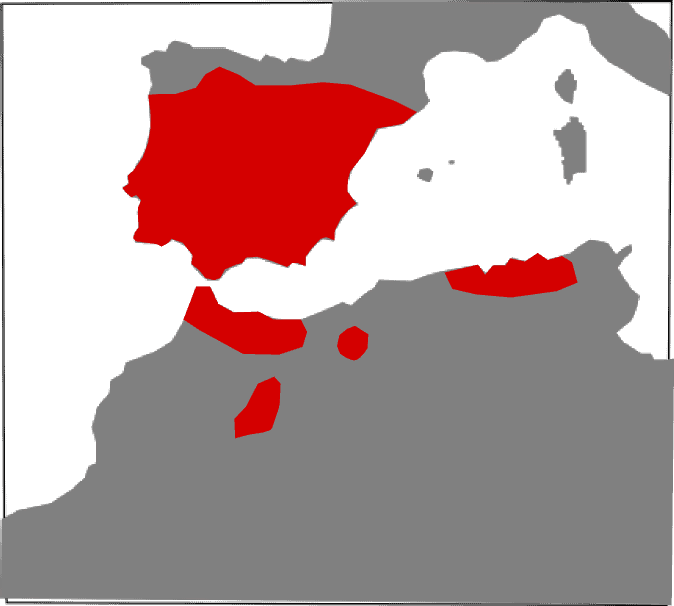
The Lataste’s viper prowls its Spanish domain by day, except in the hottest parts of summer when they become semi-nocturnal. For much of the year they don’t do much prowling at all. A Portuguese study found 3.08 metres to be their average daily movement (in males). But in September, they suddenly activated, and moved an average of 21.5 metres per day. A Spanish study found that in March-April and September-October they moved 60 metres and 45 metres. The reason is that these months are breeding season.
Lataste’s vipers also dislike rainfall. If March is unusually wet then they leave their hibernation dens (which are usually on a shrubby rock slope) much later, while a dry November causes them to stay active for longer. Mid-August meanwhile, is the most common month for newborns. Instead of eggs, Lataste’s vipers lay live young, and the quantity ranges from 4 to 13. At birth they’re 14-18cm, versus 40-60cm for the average adult.
Within its rocky or oak forest domains, the best place to spot a Lataste’s viper is lurking under shrubs, or maybe a bush. They’re not ultra shy, nor underground dwellers like the false smooth snake, but you won’t find them aimlessly slithering around on open dusty plains. They sometimes even climb bushes, through the tangled inner branches, possibly to escape the roasting floor during hot weather.
